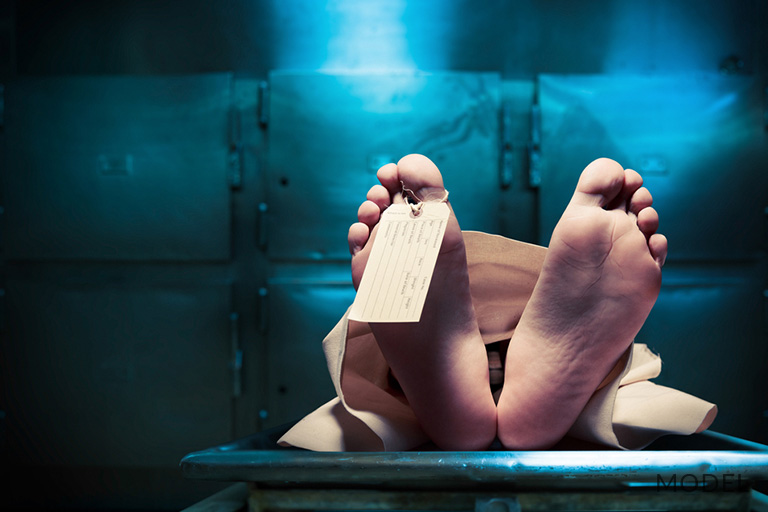

We detected that you're using an older version of Internet Explorer. please upgrade IE 11 or later
Alternatively, you can install and use these secure and newest browsers: Chrome | Firefox | Safari for MacOS | Edge for Windows

A forensic autopsy is a detailed postmortem examination conducted to determine the cause and manner of death, particularly in cases involving sudden, unexplained, or unnatural deaths. It plays an important role in criminal investigations, but many people misunderstand how it works. Television shows like CSI and NCIS have shaped unrealistic expectations, making forensic autopsies seem like quick and flawless processes that always yield answers. In reality, forensic pathology is complex, and results are not always immediate or definitive. Here are three of the most common misconceptions about forensic autopsies and the truth behind them.
The Reality: Some deaths remain inconclusive despite a full forensic autopsy. Decomposition, undetectable poisons, or medical conditions that leave no physical trace can make it difficult to determine an exact cause of death. In such cases, a forensic pathologist may list the cause as undetermined if there isn’t enough evidence to draw a clear conclusion. This uncertainty can be especially difficult for grieving families seeking definitive answers.
Example: If someone dies suddenly from a rare cardiac arrhythmia, there may be no visible signs on the body. Similarly, certain poisons can leave no trace if they have fully metabolized before death. Even with toxicology tests, some substances may be impossible to detect after a certain period.
Why This Misconception Exists: TV shows often depict forensic autopsies as producing instant and definitive results. In reality, many cases require weeks of testing, and even then, the findings might not provide absolute certainty.
The Reality: Crime shows portray forensic science as fast and high-tech, but real forensic autopsies involve meticulous documentation, detailed examinations, and waiting for lab results. The process includes:
Unlike TV shows where lab results appear in minutes, toxicology and DNA testing can take weeks or even months, depending on the case. Forensic pathologists also rely on police reports, medical history, and witness statements—not just physical evidence from the body.
Why This Misconception Exists: The “CSI Effect” has led many to believe that forensic science provides instant answers. In reality, it is a slow, methodical process that requires teamwork, patience, and extensive expertise.
The Reality: Families do not have the legal right to demand a forensic autopsy. When a death is unnatural or unexplained, the decision to perform a forensic autopsy is up to the medical examiner or coroner, not the family. These officials are public servants, legally tasked with investigating deaths to determine cause and manner, often in the interest of public health and safety. If a death is clearly natural and does not require further investigation, a forensic autopsy may not be conducted, even if the family wants one.
In these cases, families may request a private forensic autopsy, performed by an independent forensic pathologist.
Ethical and Religious Considerations: Some families object to a forensic autopsy due to religious beliefs. Medical examiners try to accommodate these concerns, but in cases involving potential criminal activity or public health concerns, a forensic autopsy is usually required by law, regardless of religious objections.
Unlike what’s portrayed on TV, real death investigations are complex, requiring time, detailed analysis, and medical expertise. A forensic pathologist plays a crucial role in determining the cause and manner of death, offering insight that may be valuable for legal cases, death investigations, and families seeking answers.
Dr. Satish Chundru, a board-certified forensic pathologist with more than 20 years of experience, conducts forensic autopsies for natural and unnatural deaths in Texas, Nevada, and Utah and offers consulting services nationwide. Learn more about how we can assist you in understanding the cause and manner of death through forensic pathology or private autopsy services.
Please be aware that this is not a secure email network under HIPAA guidelines. Do not submit any personal or private information unless you are authorized and have voluntarily consented to do so. We are not liable for any HIPAA violations. Understand that if you email us, you are agreeing to the use of an unsecured method and understand that all replies will be sent in the same fashion, which you are hereby authorizing.
By checking this box you hereby agree to hold Satish Chundru, including it’s doctors and affiliates, harmless from any hacking or any other unauthorized use of your personal information by outside parties. By checking this box, you also agree to receive email communication from Satish Chundru and its doctors and affiliates.